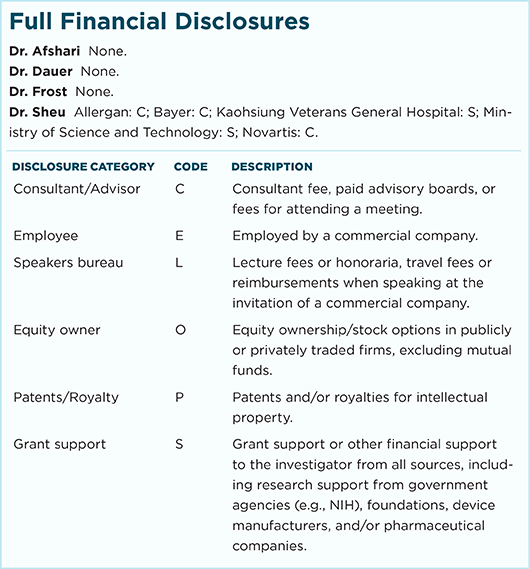Download PDF
A panel of radiation protection experts has recommended a significant drop in the annual, occupational dose of ionizing radiation permissible for the crystalline lens.
The goal: to reduce the incidence of radiation-induced cataracts.
After an extensive review on behalf of the National Council for Radiation Protection and Measurements (NCRP), the scientists recommended cutting the maximum occupational dose to the lens by two-thirds, to 50 millisieverts (mSv) annually.1 (On average, Americans receive about 6 mSv of radiation per year from naturally occurring and medical exposures.)
Protecting patients. For ophthalmologists, this stricter standard suggests that a new level of vigilance should be employed for certain patients, notably medical colleagues whose work involves radiation, said the panel’s cochair, Lawrence T. Dauer, PhD, at Memorial Sloan Kettering Cancer Center in New York City. Such colleagues would include interventional cardiologists and radiologists, Dr. Dauer said.
Assessing the evidence. The panel noted that there has been a gradual realization in recent years that radiation-induced cataracts can occur at much lower, chronic dose levels than was previously thought. Dr. Dauer said the group evaluated nearly 60 epidemiological studies and found evidence (albeit weak) of causation at low doses and at low dose-rates of radiation exposure.
“We recognized that there likely were effects at doses lower than previously understood and therefore felt it was prudent to reduce the limit, rather than leave it where it was,” he said. “We thought that a reduction in the limit for the eye could wake up some of the radiation protection community to recognize the lens as a potential issue, about which we should be more concerned than we have been in the past.”
However, the report noted that uncertainty remains about the mechanisms and the dose threshold for radiation-induced cataractogenesis. In addition, more research is needed on dosimetry methodology and dose-sparing optimization techniques. It would take a huge research project to eliminate the uncertainty surrounding these issues, Dr. Dauer said. “Those studies would be exceedingly expensive, and it would take probably a million or more participants to tease out the impacts at these low-dose levels,” he said.
Average Radiation Doses
|
| Procedure |
Eye Dose (mSv), Unshielded/Shielded+ |
| Hepatic chemoembolization |
0.27-2.14/0.016-0.064 |
| Iliac angioplasty |
0.25-2.22/0.015-0.066 |
| Neuroembolization (head, spine) |
1.38-11.20/0.083-0.329 |
| Pulmonary angiography |
0.19-1.49/0.011-0.045 |
| TIPS* creation |
0.41-3.72/0.025-0.112 |
+ Range reflects variations in examination techniques and distance from isocenter.
* Transjugular intrahepatic portosystemic shunt
Source: Vano E et al. Radiation. 2008;248(3):945-953. |
Leaded glasses? The panel hopes that its report will prompt physicians whose workday exposes them to radiation to better protect their eyes, Dr. Dauer said. “Interventionalists already wear leaded aprons to protect their whole bodies from scattered x-rays. If they could put on a pair of leaded glasses [that don’t restrict their eyesight], then they can reduce their dose to the lens by at least a factor of 10, if not more,” Dr. Dauer said.
Strategic scans. The lenses in patients’ eyes also can be protected if physicians adhere to the ALARA-dose principle (“as low as reasonably achievable”) when planning imaging tests such as computed tomography (CT) scans of the head, he said.
“Are there ways to do that CT in which you reduce the dose to the lens of the eye while still getting a clear image of the patient? Is there a way to shield the eye? Is there a way to swing the gantry of the CT at a slightly different angle and reduce the lens dose significantly? Research to answer questions like these has already begun, and we likely will see more of that as a result of this report,” he said.
The panel’s summary recommendations were drawn from a 147-page report published last year.2
—Linda Roach
___________________________
1 Dauer LT et al. Int J Radiat Biol. Published online April 3, 2017.
2 Dauer LT et al. Commentary No. 26—Guidance on Radiation Dose Limits for the Eye. National Council for Radiation Protection and Measurements, www.ncrppublications.org/Commentaries. Accessed April 27, 2017.
___________________________
Relevant financial disclosures—Dr. Dauer: None.
For full disclosures and disclosure key, see below.

More from this month’s News in Review